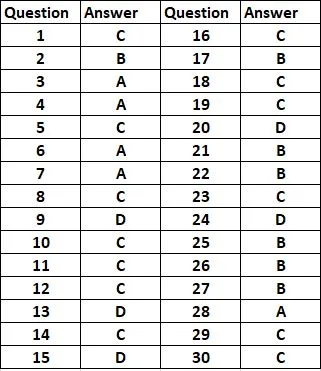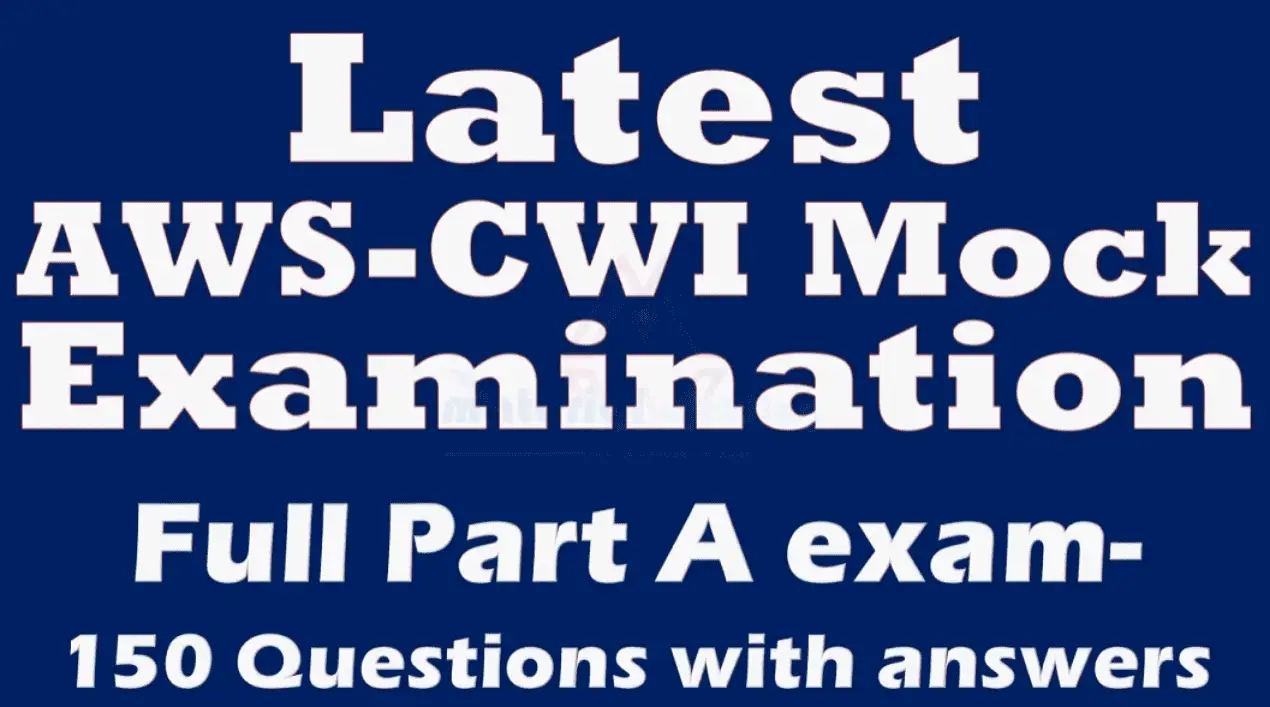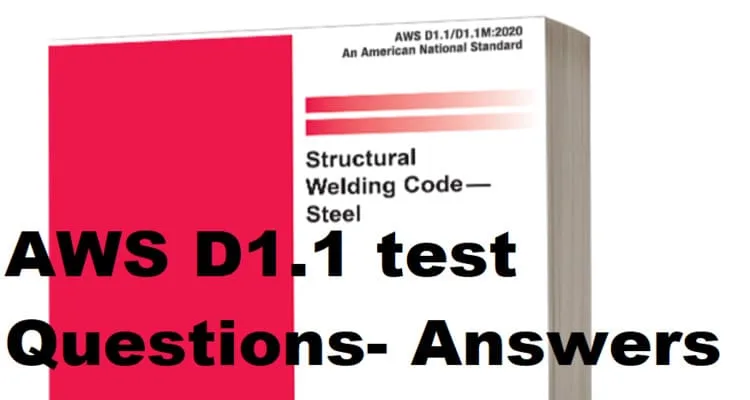IWE-IWT-IWIP-C Exam Questions Answers
- Which of the following is NOT a type of welding?
a) Shielded metal arc welding
b) Laser beam welding
c) Riveting
d) Plasma arc welding
- Which zone has the highest temperature during welding?
a) Heat affected zone
b) Fusion zone
c) Base metal
d) None of the above
- What does GMAW stand for?
a) Gas metal arc welding
b) Gas magnet arc welding
c) Gas measured arc welding
d) None of the above
- What does SAW stand for?
a) Submerged arc welding
b) Solid arc welding
c) Suspended arc welding
d) None of the above
- Which metals are most suitable for welding?
a) Ferrous metals
b) Non-ferrous metals
c) Both ferrous and non-ferrous metals
d) None of the above
- Transformation of solid metal into liquid and vice versa takes place during welding due to:
a) Heat generated
b) Pressure
c) Both heat and pressure
d) None of the above
- Grain growth occurs in the ________ zone during welding.
a) Heat affected
b) Fusion
c) Both
d) None of the above
- Which of the following is NOT a property that may change in the HAZ of a weld?
a) Hardness
b) Toughness
c) Density
d) Grain size
- Preheat temperature is required in welding of:
a) Carbon steels
b) Stainless steels and alloy steels
c) High strength low alloy steels
d) All of the above
- The formation of brittle microconstituents in stainless steels during welding can be prevented by:
a) Maintaining interpass temperature
b) Using proper filler material
c) Both a and b
d) None of the above
- Stress relieving of welded parts is done to:
a) Remove residual stresses
b) Relieve distortion
c) Both a and b
d) None of the above
- Preheat reduces the risk of:
a) Hot cracking
b) Cold cracking
c) Both a and b
d) None of the above
- Why is preheating required for stainless steel welding?
a) To prevent porosity
b) To prevent cold cracking
c) To ensure complete fusion
d) All of the above
- Post weld heat treatment is NOT required for:
a) Carbon steels
b) Low alloy steels
c) Austenitic stainless steels
d) Duplex stainless steels
- Hardenability of steels is determined by the amount of:
a) Carbon
b) Manganese
c) Chromium
d) All of the above
- Which type of steel is the most hardenable?
a) Low carbon steel
b) Medium carbon steel
c) High carbon steel
d) Alloy steel
- The most hardenable part during welding is the:
a) Base metal
b) Heat affected zone
c) Fusion zone
d) None of the above
- Which of these is NOT a post weld heat treatment?
a) Normalizing
b) Stress relieving
c) Aging
d) Tempering
- Solidification range in welding is affected by:
a) Composition of the base metal
b) Heat input
c) Both a and b
d) None of the above
- Hot cracking occurs due to:
a) High melting temperature
b) Partitioning of elements like sulphur and phosphorous
c) Formation of brittle intermetallic phases
d) All of the above
21. Which element is most effective in reducing the toughness of steel during welding?
a) Carbon
b) Sulphur
c) Phosphorus
d) Silicon
22. Hot shortness refers to the tendency of the weld metal to:
a) Crack during cooling
b) Crack during solidification
c) Absorb hydrogen
d) All of the above
23. Sensitization in stainless steel occurs due to:
a) Precipitation of chromium carbides at the grain boundaries
b) Depletion of chromium near the grain boundaries
c) Both a and b
d) None of the above
24. Hardfacing alloys contain high amounts of:
a) Chromium
b) Carbon
c) Tungsten carbide
d) All of the above
25. The susceptibility to hot cracking reduces with the increase in:
a) Carbon equivalent
b) Manganese equivalent
c) Both a and b
d) None of the above
26. Which parameter DOES NOT affect the depth of penetration?
a) Voltage
b) Polarity
c) Speed
d) None of the above
27. Grain growth during welding occurs mainly in the:
a) Fusion zone
b) Heat affected zone
c) Base metal
d) All zones
28. Lamellar tearing occurs due to:
a) Solidification cracking
b) Decarburization
c) Both a and b
d) None of the above
29. Phosphorus has the highest solid solubility in:
a) Austenitic stainless steel
b) Ferritic stainless steel
c) Martensitic stainless steel
d) Duplex stainless steel
30. The hardest type of stainless steel is the:
a) Austenitic
b) Ferritic
c) Martensitic
d) Duplex
Answers






